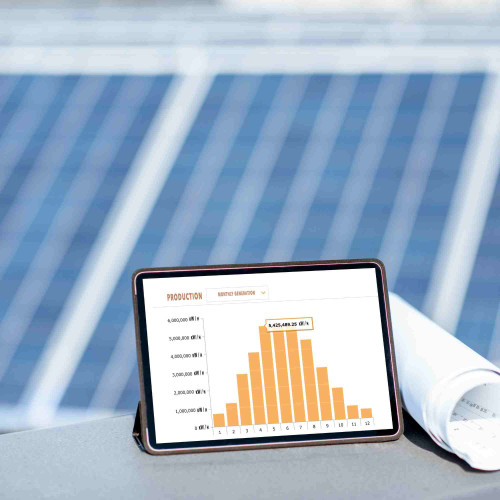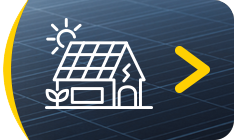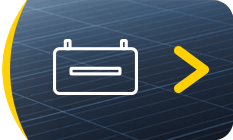- 16 Jun, 2023
- Solar Training , Self-consumption , Using and installation

The installation of photovoltaic solar panels is an increasingly popular solution for generating electricity from renewable sources. However, before embarking on such a project, it is important to understand the criteria to consider in order to assess its profitability.
Criteria to consider for profitability calculation
- Initial investment in the photovoltaic installation
The first criterion is the initial investment. This includes the cost of solar panels, inverters, batteries (if necessary), and installation fees. The larger the investment, the longer the payback period will be.
- Electricity production from your solar panels
Next, you need to estimate the annual electricity production of the solar panels based on the panel's power and local sunlight exposure. In fact, the sunnier your region, the more efficient your panels will be. The European Community website offers a PV GIS tool to calculate solar production at your address.
- Your usual electricity consumption
It is also important to estimate your annual electricity consumption and calculate the portion covered by solar panels. The profitability of your installation will depend on your level of self-consumption. If you consume all the electricity generated, the profitability will be better, of course.
- Electricity prices in 2023
Finally, it is necessary to compare the cost of electricity produced by solar panels with the cost of grid electricity.
Your self-consumption naturally reduces your energy bill, being valued at the price of the saved kWh including taxes, which, if you are with EDF in a 6 kVA contract, is around €0.2228 during peak hours.
- Lifespan and maintenance of your solar panel installation
It is also important to consider the lifespan and maintenance of solar panels. You need to estimate the costs of maintenance and replacement of faulty components. At Alma Solar, our panels are guaranteed for a lifespan of 30 years. However, the inverter needs to be replaced every 10 to 15 years.
Example of profitability calculation
To illustrate the profitability calculation, let's take the example of a photovoltaic solar panel installation on the roof of a house for a 4-person household in Aix-en-Provence. The average electricity consumption for this configuration is around 4700 kWh per year, or about 390 per month.
We checked on the PV GIS that solar production in Aix-en-Provence is a minimum of 368 kWh per month, which covers our theoretical monthly needs.
Therefore, we need an installation of at least 4 kWp to generate enough electricity to meet our needs.
Using our advanced configurator, we obtained the following proposal for a turnkey installation without storage (and therefore without batteries):
- 10 Solar panels 410W €1800
- 6 kW Inverter €940
- Boxes and miscellaneous accessories €1860
- Workee installation €2800
Note that we chose a more powerful inverter than our needs to make our installation scalable over time and allow for higher production if necessary.
The total cost of the installation is therefore €7400 including taxes, which corresponds to a price of €0.07 per kWh over 20 years.
In this case, the payback period will be approximately 7 years.
Financial incentives for solar panel installations in 2023: The self-consumption bonus
If you agree to sell the unconsumed energy instead of storing it in a batteryfor later use, your surplus production will be directly sold to EDF to power the public electricity grid. The feed-in tariff for 2023 is €0.15 per kWh. However, it is important to note that the received amount must be declared and counts as taxable income.
On the other hand, if you choose surplus sale, you will receive a self-consumption bonus, which is granted without income conditions and calculated based on the power of your installation (€500/kWp for installations below 3 kWp, €370/kWp for installations between 3 and 9 kWp, €210/kWp for installations between 9 and 36 kWp, and €110/kWp for installations above that).
The self-consumption solution with surplus sale is very interesting for solar panel owners. It helps reduce electricity costs and monetize surplus production.
It is important to consider this option when calculating the profitability of your solar panel installation. Indeed, this solution can be the most profitable depending on your electricity consumption and the production of your solar panels. In our previous example, for a 4 kWp installation, you will receive a bonus of €4x370, paid once on the anniversary date of your installation. This will bring the profitability of your equipment to less than 6 years, not counting the value of the sold surplus.
There are other financial incentives for solar panel installations, such as tax credits, subsidies, and zero-interest loans. It is important to inquire about the eligibility conditions and application procedures.
In conclusion, the installation of photovoltaic solar panels can be profitable in the long run, but it is important to carefully evaluate the costs and benefits before embarking on such a project. Financial incentives can also help reduce the initial investment.
In 2023, an installation becomes profitable between 6 and 10 years, and with the rising electricity prices and the democratization of photovoltaics, profitability continues to improve. As you may have understood, solar energy has a promising future and contributes to the energy transition towards more sustainable and environmentally friendly sources of energy.
To ensure you make the right choice, use our online configurator to accurately determine your needs with full transparency. At Alma Solar, we are here to accompany you from equipment selection to installation through our certified RGE partner installers at Workee.










